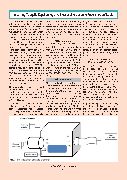Imparting Mosquito Repellent Agents & Assessing Mosquito Repellency on Textile es (WHO 1996). This test does not in- volve human participants as the bait to lure the mosquitoes come to fabric and this in one of advantages of this method. Due to this factor, this meth- od is less chosen by the researcher to conduct the mosquito repellency test on clothing. The use of artificial blood or animal blood as bait in order to at- tract host seeking mosquitoes, which in this cone test could help future stud- ies to better assess of the eficacy on the treated clothing. In the cone test, the mosquitoes might spend more time resting on the cone than on the treat- ed surface during the 3 min exposition. The 3-min exposure test was carried out under the temperature of 27°C. The standard WHO plastic cone was placed on top of the treated surface of the sample and secured using a masking tape. Five to ten female mosquitoes were blown into the cone using aspira- tor and mosquitoes were exposed to the treated surface. The low density mosquito number used for this method made it easy observa- tion for the mosquito behaviour. The numbers of mosquitoes resting on the treated samples were counted within 3-min exposure. At the end of the exposition, the mos- quitoes were transferred to the plastic cones for further observation. The plas- tic cup kept in an insecticide-free air and supplied with 10 % sucrose solu-tion. The number of immobilized, knocked down test mosquitoes was determined 1 h after the exposition and the mortality rate was determined af- ter 24 h. The percent mosquito repel- lency was calculated using the follow- ing formula: % Mosquito mortality = (MR - MC)/(100 - C) × 100 where MR represents the mosquitoes mortality in test replicate while the MC corre- sponds to the mosquitoes mor- tality in control samples. The natural mortality rate is determined with an untreated fabric as reported by (Lalit Jajpura 2015). The results will be col- lected and performed in ANOVA soft- ware for further analysis. Only one study by Farag et al. (2011) demonstrat- ed cone test for their mosquito repel- lency test. Excito chamber test The excito chamber method is a mod- ified custom method to observe the mosquito behaviour change in the form (Fig. 3) of moving away from the treat- ed to untreated fabric. This method and Cone test method does not involve the human subject to lure the mosquito. However, both methods can determine the behaviour of the mosquitoes to- wards the treated materials. The box is made with one front and exit panel occupied with single escape portal. It builds up with screened inner cham- NCM-OCTOBER 2021 42ber, glass holding frame and door cov- er. The mosquito was starved overnight or least minimum 4 h before the test. The behaviour of mosquito was ob- served in term of number of escaped mosquitoes to another space and re- main mosquitoes inside the chamber which filled with treated product. The observation is recorded after 10 and 30 min exposure. The test was con- ducted in daylight and repeated for four times. The percentage of mosquito re- pellency was calculated using the for- mula: % Mosquito repellency = (NES + NDE)/(NEX) × 100 where NES corresponds to the num- ber of mosquitoes escaped, while the NDE refer to the number of mosqui- toes dead and last is NEX represents the number of mosquitoes exposed. The results will be collected and per- formed in ANOVA software for further analysis. Three studies (Alipour et al. 2015; Anitha et al. 2011; Chareonvir- iyaphap et al. 2002; Maheshwari and Ramya 2014; Roberts et al. 1997; Sumithra and Vasugi Raja 2012) con- ducted this method of mosquito repel- lency in their studies. In general comparison, the suitability of the three methods reviewed accord- ing to dif- ferent intended test objec- tives or situation. For example cone test is more suitable for a study that is
